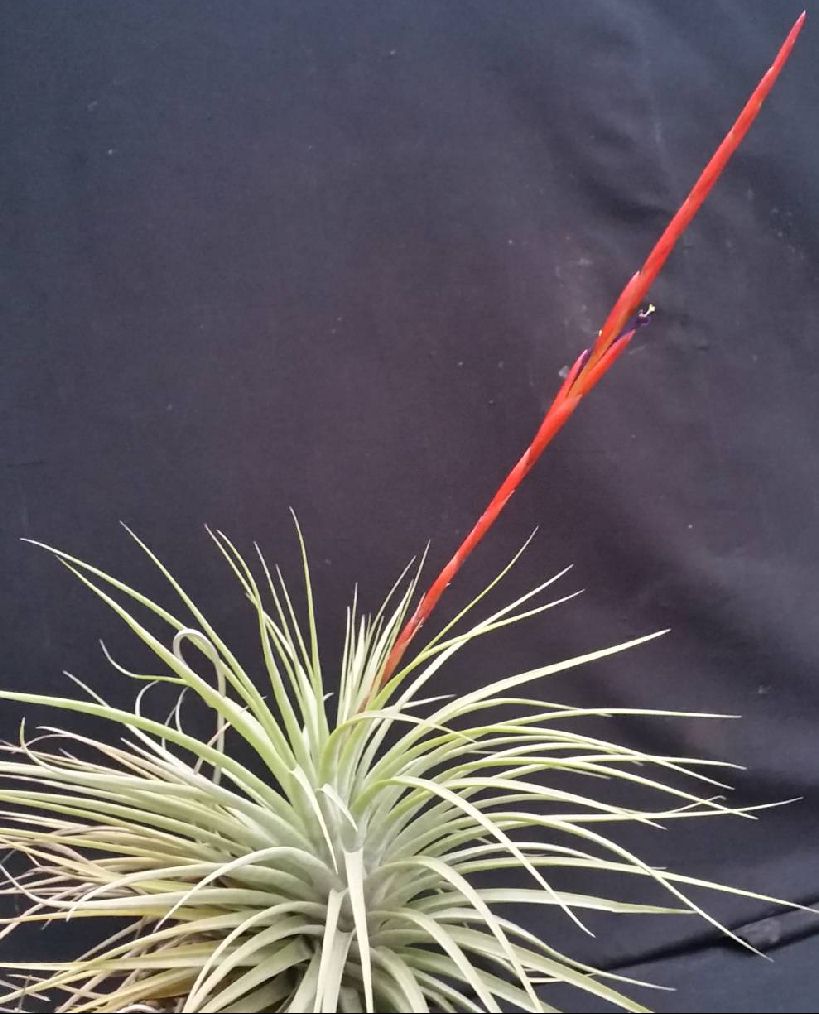
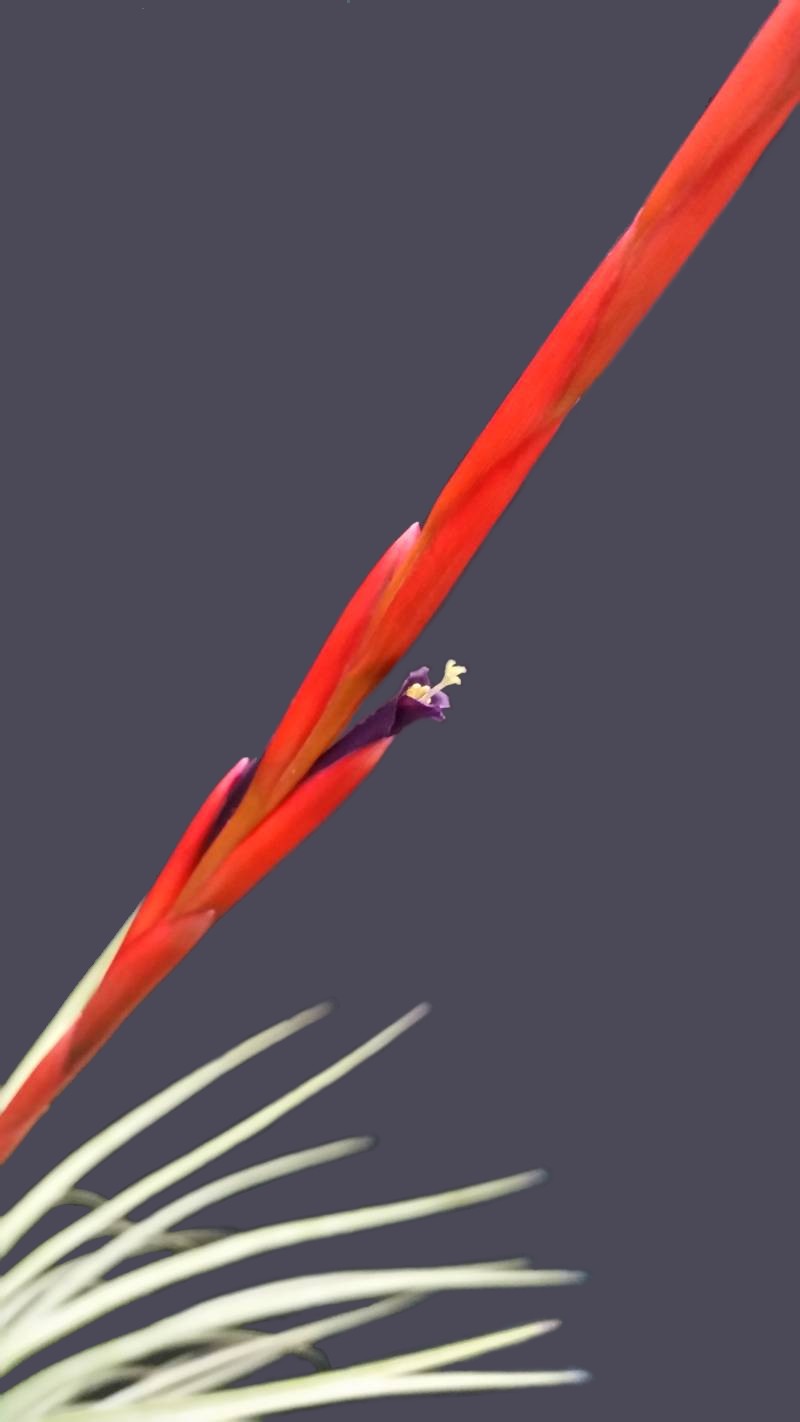
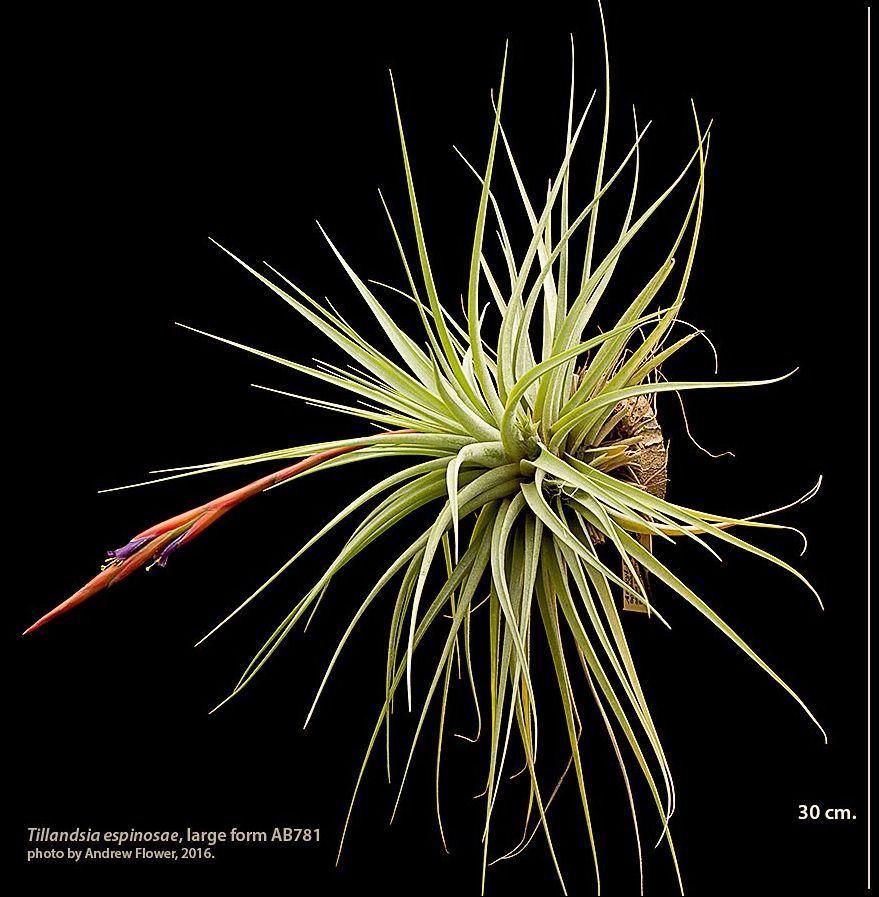
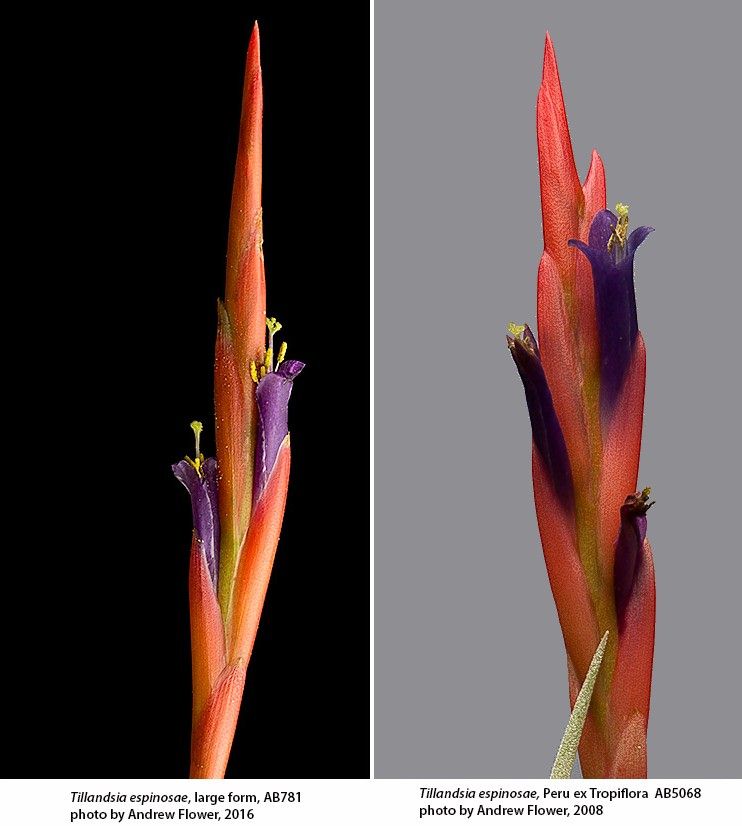
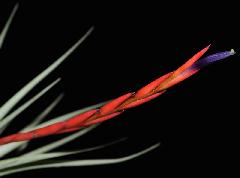
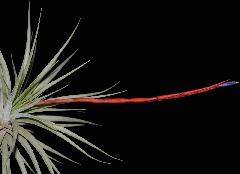
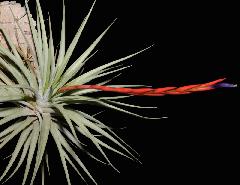
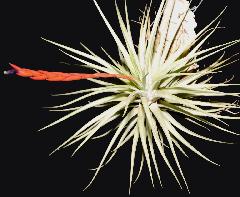
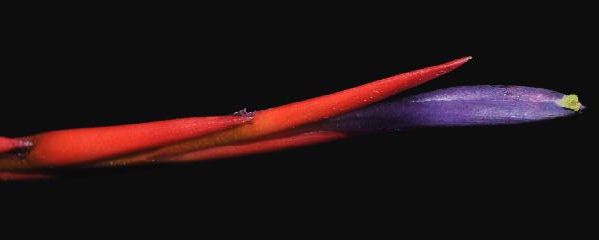
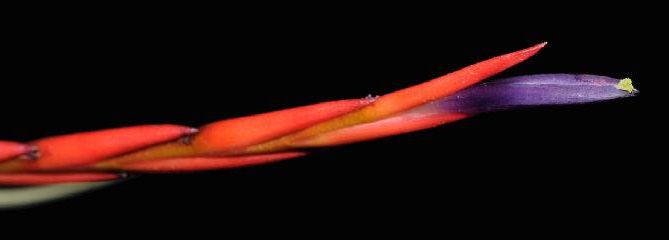
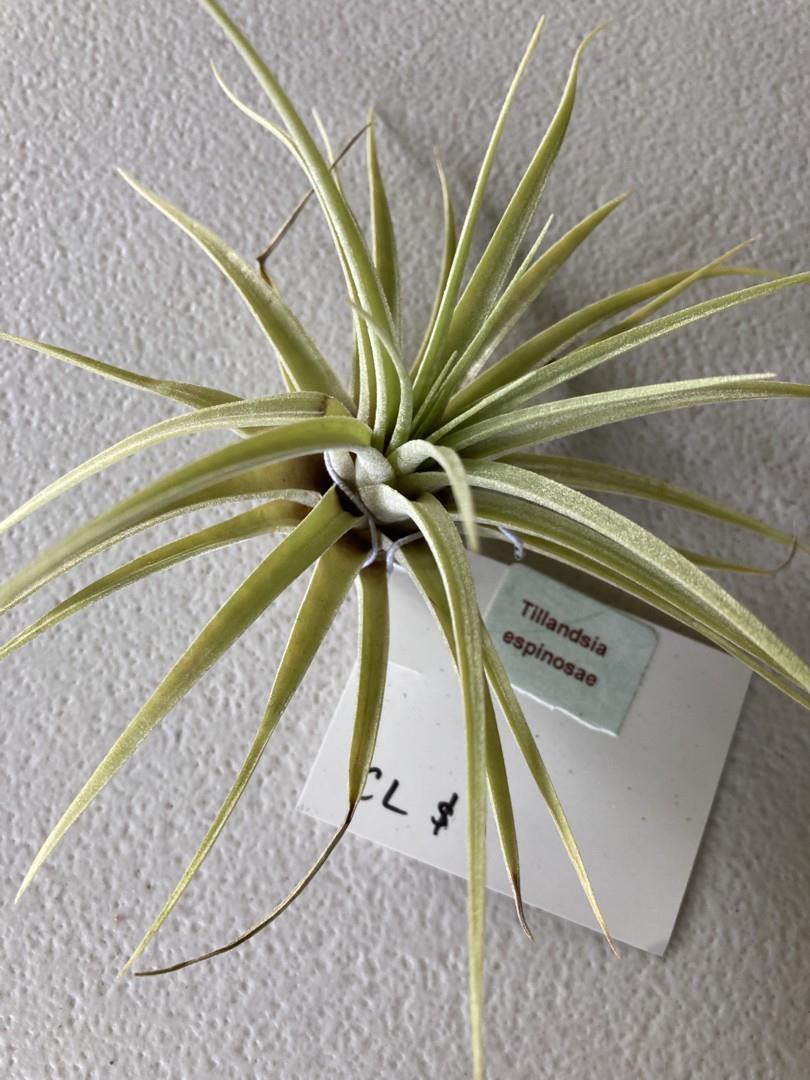
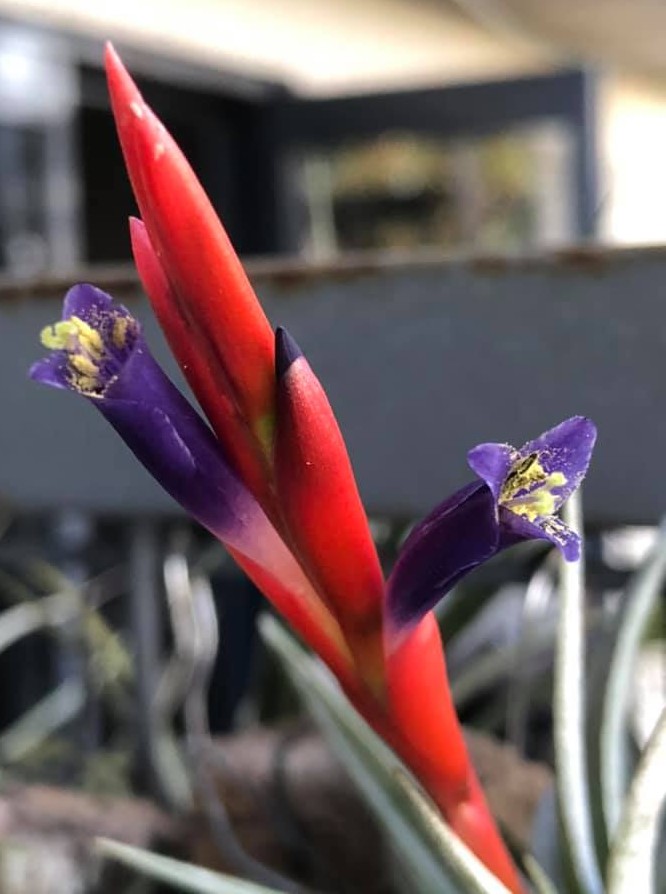
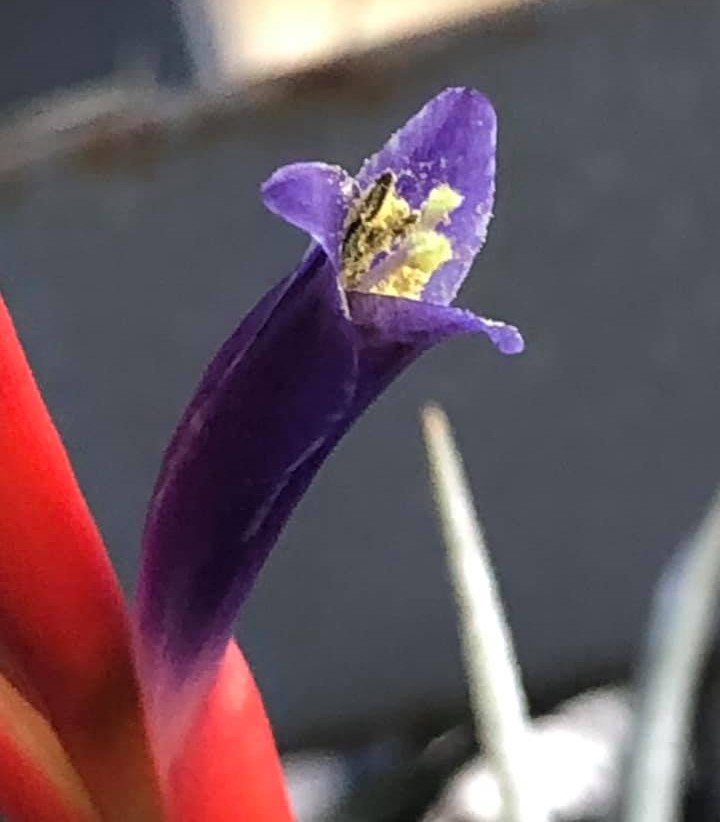
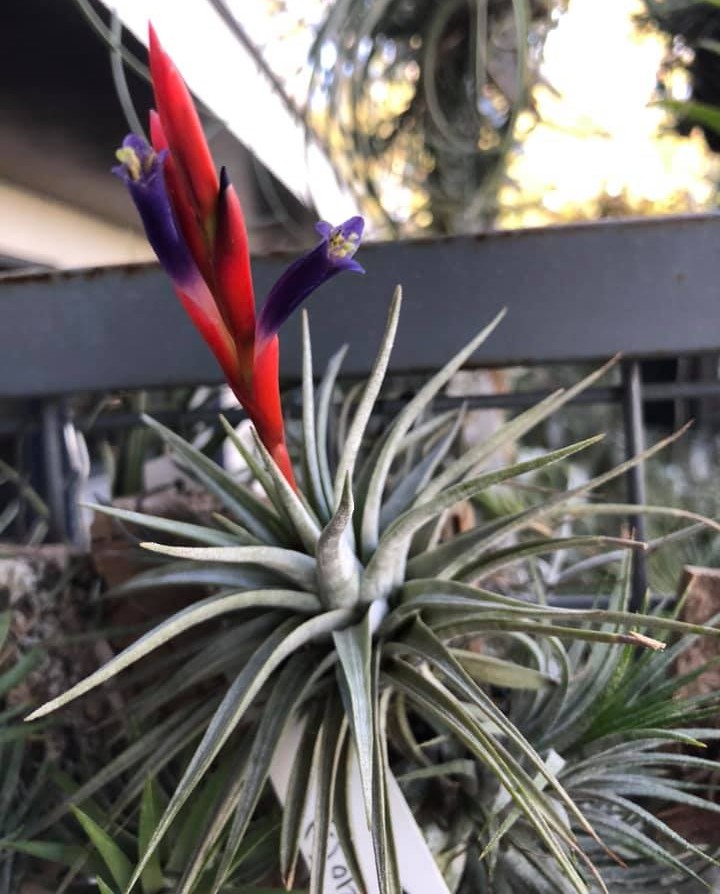
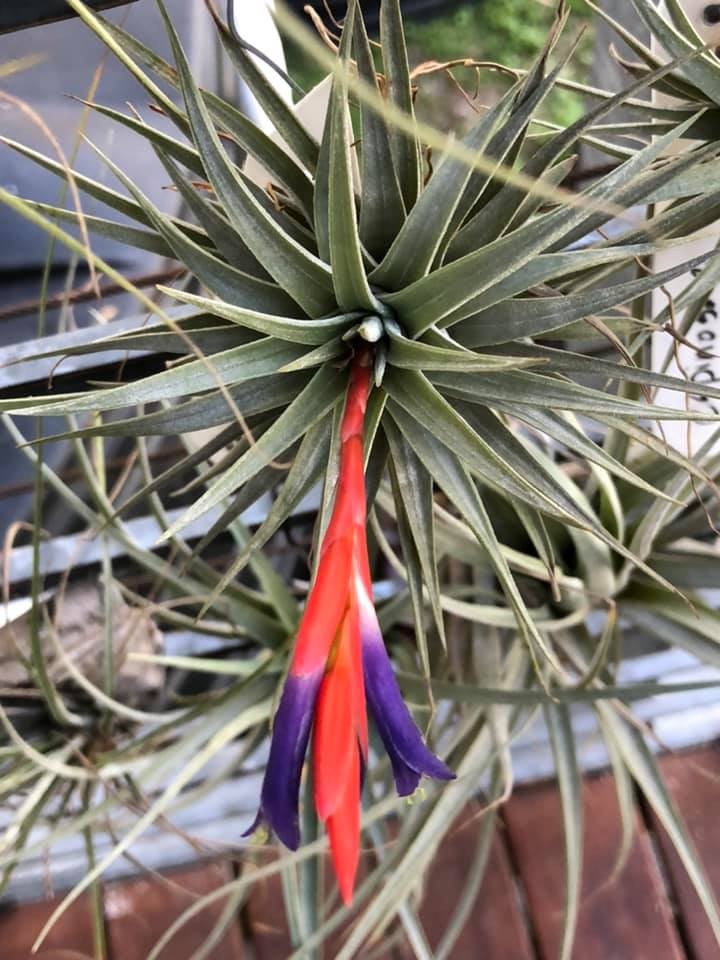
Desc from S&D
Plant stemless, flowering 15-16 cm high.
Leaves many, densely rosulate, divergent or spreading in all directions, very densely lepidote throughout with minute cinereous subappressed scales;
Sheaths broadly ovate, scarcely distinct from the blades;
Blades rigid, nearly straight, linear-triangular, long-attenuate, pungent, 6-7 mm wide, involute when dry.
Scape erect, slender, about equaling the leaves, sparsely appressed-lepidote;
Scape bracts erect, densely imbricate, elliptic, obtuse, thin, red, appressed-lepidote. Inflorescence simple, linear-lanceolate, 7 cm long, 8 mm wide, complanate, subdensely 6-flowered;
Rhachis slender, slightly flexuous, deeply excavated, sparsely and obscurely lepidote. Floral bracts erect, slightly imbricate but concealing very little of the rhachis, oblong-elliptic, obtuse, 25 mm long, much exceeding the sepals, ecarinate, enfolding the flowers when dry, thin, bright red, sparsely lepidote;
Pedicels stoutly obconic, 3 mm long.
Sepals free, elliptic, obtuse, 12 mm long, ecarinate, thin, very sparsely and obscurely lepidote;
Petals 30 mm long, violet;
Stamens included, filaments plicate toward apex.
Type. Espinosa E-1205 (holotype GH), Huaico, Sierra de la Toma, Loja, Ecuador, 9 Jan 1947.
DISTRIBUTION. Epiphytic, dry open scrub and woods, 200-900 m alt, coastal Ecuador and Peru.
ECUADOR. MANABI: Puerto Cayo to Jua (Joaz), 13 Oct 1952, Fagerlind & Wibom 617 (S, US); Jipijapa, 18 Mar 1964, Gilmartin 887 (US). ORO: Santa Rosa, 29 Aug 1954, Rauh & Hirsch E-5 (US). PERU. PIURA: Canchaque, 4 Oct1954, Rauh & Hirsch P-2127 (US). AREQUIPA: Canana, 18 Mar 1954, Rauh & Hirsch P-539-A (US).
Vriesea espinosae (L. B. Smith) Cilmartin, 1968 (Phytologia vol. 16, no. 2) pp. 163-164.
Tillandsia espinosae L. B. Smith, 1951 (Contrb. U.S, Nat. Herb. vol. 29, no. 10) pp. 198 -199, fig 65, d, e.
Detail from Gilmartin 1972
PLANT ca. 30 cm tall, stemless, growing in clumps several meters in diameter, each plant connected to next one by a stolon ca. 12 cm long by 8 mm in diameter covered by many short, imbricate leaves;
LEAVES 14-22 cm long, blades 0.7-1.2 cm wide, narrowly triangular, involute, densely silvery, gray, lepidote, apex attenuate to filiform;
SHEATH ca. 2.0 cm long by 1.5 cm wide, pale brown;
SCAPE ca. 2 mm in diameter, erect, scarcely exceeding leaf-rosette;
SCAPE-BRACTS 2.0-2.5 cm long, erect, inrbricate, apex subacute, nearly all of uniform length, red, elliptic,
INFLORESCENCE 6.0-9.0 cm long by 8 mm wide, simple, distichous, having ca. 6 flowers, slightly lepidote, red;
FLORAL BRACTS ca. 2.5 cm long by 1.0 cm wide, oblong-elliptic, ecarinate, enfolding flowers, bright red, slightly lepidote without, glabrous within, apex acute, papery;
SEPALS l.1-1.3 crn long by 5 mm wide, green, rose tipped, free, elliptic, obtuse, papery: PETALS 3.0-4.0 cm long, blade violet, with two scales ca. 1.0 cm long from petal base, stamens included;
OVARY ca. 6 mm long by 2 mm in diameter, in flower around February to April, distance between flowers ca. 1.2 cm.
MATERIAL EXAMINED: Espinosa E-1205 (GH, TYPE; US, photo and fragment) epiphytic, Huico, South of La Toma, Prov. Loja, 1400 m, Sept. 1946; Fagerlind and Wibom 617 (US) common epiphyte, between Puerto Cayo and Juaz (Joaz), west of Jipijapa, Prov. Manabi, 13 Oct. 1952; Rauh, Hirsch E 5 (US) in Bombax woods, near Santa Rosa, Prov. El Oro, 200 m, 29 Aug. 1957; AJG 887 (US) epiphytic, common locally, ca. 2 km south of Jipijapa, Prov. Manabi, ca. 60 m, 18 March 1964.
NOTES: The petals of AJG 887 clearly show basal scales indicating that the species belongs in Vriesea. Although the description of the type specimen does not mention the stolons it is probable that the stolons were simply not collected. The other collections show the stolons between plants. The species seems to be restricted to xerophytic communities west of the Andes.